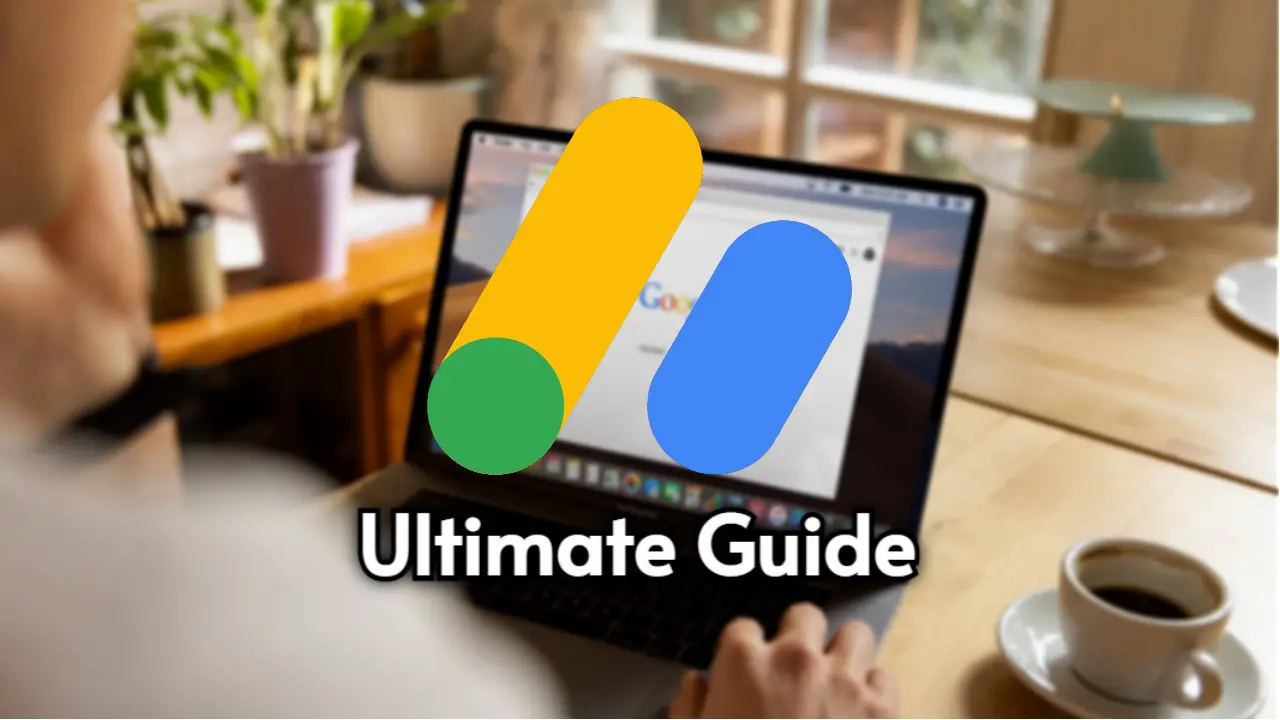The Ultimate Guide to Maximizing Your AdSense Earnings Through Blogging
Understanding AdSense and How It Works
If you’re new to blogging and looking to make money from your site, AdSense is a great place to start. AdSense is a contextual advertising program run by Google that allows bloggers and website owners to earn money by displaying ads on their site. Here’s how it works:
Step 1:
You sign up for AdSense and get approved.
Step 2:
You place ad code on your website.
Step 3:
Visitors to your website click on the ads.
Step 4:
You earn money for each click.
Sounds easy enough, right? Well, there’s a bit more to it than that. Here are some things you need to know about AdSense:
Ad Types:
AdSense offers a variety of ad types, including text ads, image ads, and link units. Depending on the layout of your website, you may find that certain types of ads perform better than others.
Ad Targeting:
AdSense uses contextual targeting to serve ads that are relevant to the content on your website. This means that if you have a blog about cooking, you’re more likely to see ads for kitchen appliances and gourmet ingredients.
Ad Auction:
Advertisers bid on ad space on your website through an auction process. The highest bidder gets their ad displayed on your site. This means that you’ll earn more money for clicks on ads from high-paying advertisers.
AdSense Policies:
AdSense has strict policies regarding what types of content can be displayed next to ads. Make sure you read and understand these policies before you start using AdSense.
Now that you understand how AdSense works, it’s time to start thinking about how to maximize your earnings. The next section of this guide will cover finding the right niche for your blog.
Finding the Right Niche for Your Blog
When it comes to maximizing your AdSense earnings through blogging, finding the right niche for your blog is crucial. Your niche should be an area of interest that you’re passionate about and can create high-quality content for consistently. Here are some tips for finding the right niche for your blog:
Research:
Start by doing some research to find out what topics are popular and have high search volume. You can use tools like Google Keyword Planner, SEMrush, or Ahrefs to find out what people are searching for in your niche. Look for topics that have a high search volume but low competition to increase your chances of ranking higher in search results.
Narrow Down Your Niche:
Once you’ve identified a broad topic, try to narrow it down to a specific sub-niche. For example, if you’re interested in fitness, you could focus on a specific type of fitness like yoga or weightlifting. By narrowing down your niche, you’ll be able to create content that’s more targeted and relevant to your audience.
Consider Your Expertise:
Your niche should also be something that you’re knowledgeable and passionate about. Consider your expertise and experience in a particular area and use that to your advantage. Your readers will appreciate content that’s written by someone who knows what they’re talking about.
Assess the Profit Potential:
While it’s important to choose a niche that you’re passionate about, you also want to make sure it has the potential to be profitable. Look at the competition in your niche and see if there are advertisers willing to pay for ad space. You can use tools like AdSense Sandbox to see what types of ads are being displayed on other sites in your niche.
Stay Flexible:
Finally, it’s important to stay flexible with your niche. As you create content and analyze your AdSense reports, you may find that certain topics perform better than others. Don’t be afraid to pivot your niche or explore new topics that are related to your existing niche.
By following these tips, you’ll be able to find the right niche for your blog and create content that attracts traffic and maximizes your AdSense earnings. Remember, the key is to choose a niche that you’re passionate about and can consistently create high-quality content for.
Creating High-Quality Content That Attracts Traffic
Once you’ve found the right niche for your blog, it’s time to start creating high-quality content that will attract traffic to your site. Here are some tips for creating content that’s optimized for AdSense and will help you maximize your earnings:
1. Know Your Audience:
Before you start creating content, it’s important to know your audience and what they’re looking for. Use tools like Google Analytics to find out what types of content are popular on your site and what topics your readers are interested in. This will help you create content that’s tailored to your audience’s interests and needs.
2. Use Relevant Keywords:
Keywords are an important part of optimizing your content for search engines and AdSense. Use tools like Google Keyword Planner to find relevant keywords for your niche and include them in your content. Make sure to use keywords naturally and don’t stuff them into your content.
3. Create Engaging Headlines:
Your headlines are the first thing that readers see, so it’s important to make them engaging and attention-grabbing. Use numbers, questions, and power words to make your headlines stand out and draw readers in.
4. Write Compelling Content:
Your content should be informative, engaging, and actionable. Use storytelling techniques to make your content more memorable and relatable to your audience. Break up your content into short paragraphs and use subheadings to make it easier to read.
5. Use Visuals:
Visuals like images, videos, and infographics can help make your content more engaging and shareable. Use relevant visuals to illustrate your points and break up your content.
6. Optimize for SEO:
Optimizing your content for search engines is important for attracting traffic to your site. Use relevant keywords, meta descriptions, and alt tags to make your content more discoverable in search engine results.
By following these tips, you’ll be able to create high-quality content that’s optimized for AdSense and attracts traffic to your site. Remember, the key is to create content that’s tailored to your audience’s needs and interests, and that provides value to your readers.
Optimizing Your Blog’s Layout and Design for AdSense
Your blog’s layout and design play an important role in optimizing your AdSense earnings. Here are some tips for optimizing your blog’s layout and design for AdSense:
1. Choose the Right Ad Sizes:
AdSense offers a variety of ad sizes, and choosing the right size for your blog can make a big difference in your earnings. Larger ad sizes tend to perform better, as they’re more visible to readers. The most popular ad sizes are 336×280, 300×250, and 728×90. Experiment with different ad sizes to find what works best for your blog layout.
2. Place Ads Above the Fold:
The “fold” is the part of your website that’s visible without scrolling. Placing ads above the fold can increase their visibility and click-through rate. However, make sure not to place too many ads above the fold, as this can negatively impact the user experience and result in lower engagement.
3. Use Responsive Design:
Responsive design ensures that your website looks great and functions properly on all devices, including desktops, tablets, and smartphones. AdSense ads are also responsive, meaning they’ll automatically adjust to fit the size of the device they’re being viewed on. Using responsive design can improve the user experience and increase your AdSense earnings.
4. Avoid Ad Blindness:
Ad blindness occurs when readers become accustomed to seeing ads on your website and start ignoring them. To avoid ad blindness, try to integrate your ads into your content and make them look like a natural part of your website. Use ad styles that match your website’s color scheme and fonts to make them blend in.
5. Use Link Units:
Link units are a type of ad that displays a list of related topics that readers can click on to view ads. They’re a great way to increase your AdSense earnings without taking up too much space on your website. Place link units in strategic locations, such as in your navigation menu or at the end of your blog posts.
6. Monitor Your Results:
Keep track of your AdSense earnings and experiment with different layout and design strategies to see what works best. Use AdSense reports to analyze your ad performance and make adjustments accordingly.
By optimizing your blog’s layout and design for AdSense, you can increase your earnings and improve the user experience for your readers. Remember to experiment with different strategies and monitor your results to find what works best for your blog.
Implementing Ad Placement Strategies for Maximum Revenue
Now that you have a better understanding of AdSense and have found the right niche for your blog, it’s time to start implementing ad placement strategies to maximize your revenue. Here are some tips for ad placement that you should consider:
1. Place Ads Where They Will Be Seen:
Placing ads where they will be seen by your readers can make a big difference in your earnings. Consider placing ads in the following locations:
– Above the fold
– Within your content
– At the end of your blog post
– In your sidebar
2. Use Custom Channels:
AdSense allows you to create custom channels to track the performance of your ads. You can use this feature to identify the best-performing ads and placements on your site. Use custom channels to track the performance of different ad sizes and placements, and adjust your strategy accordingly.
3. Experiment With Different Ad Formats:
AdSense offers a variety of ad formats, including text ads, display ads, and link units. Experiment with different formats to see what works best for your blog. Use AdSense reports to identify the highest-performing ad formats and adjust your strategy accordingly.
4. Consider Ad Blockers:
Ad blockers can significantly impact your AdSense earnings. Consider using anti-ad-blocking techniques to ensure that your ads are still visible to readers who use ad blockers. You can use tools like BlockAdblock to detect ad blockers and display alternative content to readers who have them enabled.
5. Don’t Overdo It:
It’s important to find the right balance between ad placement and user experience. Placing too many ads on your site can negatively impact the user experience and result in lower engagement. Experiment with different ad placements and monitor your results to find the right balance.
6. Use Heatmap Tools:
Heatmap tools can help you identify the best ad placements on your site. These tools use color-coding to show you where readers are clicking on your site. Use this information to optimize your ad placements and increase your earnings.
By implementing these ad placement strategies, you can maximize your AdSense earnings and improve the user experience for your readers. Remember to experiment with different ad placements and formats, and monitor your results to find what works best for your blog.
Analyzing AdSense Reports and Adjusting Your Strategy Accordingly
To maximize your AdSense earnings, it’s important to analyze your AdSense reports regularly. AdSense reports provide valuable insights into your ad performance and can help you make data-driven decisions about your ad strategy. Here are some tips for analyzing your AdSense reports and adjusting your strategy:
1. Understand Your Metrics:
AdSense reports provide a wealth of information about your ad performance, including metrics like click-through rate, page views, and revenue. Make sure you understand what each metric means and how it relates to your overall ad performance. Use this information to identify areas where you can improve your ad strategy.
2. Identify Your Top-Performing Ads and Placements:
Use AdSense reports to identify your top-performing ads and placements. Look for trends and patterns in your data to see which ads and placements are generating the most revenue. Use this information to optimize your ad placements and experiment with different ad formats and sizes.
3. Monitor Your Ad Performance Over Time:
AdSense reports allow you to monitor your ad performance over time. Use this information to identify trends and patterns in your data. For example, you may notice that certain ads perform better during certain times of the day or week. Use this information to adjust your ad strategy accordingly.
4. Experiment With Different Strategies:
Use AdSense reports to experiment with different ad strategies. For example, you may want to try different ad formats or placements to see how they impact your ad performance. Use A/B testing to compare different strategies and identify the ones that work best for your blog.
5. Use Third-Party Tools:
There are many third-party tools available that can help you analyze your AdSense reports and optimize your ad strategy. Tools like AdSense Dashboard and AdSense Performance Reports provide detailed insights into your ad performance and can help you identify areas for improvement.
6. Stay Up to Date With AdSense Policies:
AdSense policies can change over time, so it’s important to stay up to date with any updates or changes. Make sure you understand AdSense policies regarding ad placement, content, and other guidelines. Failure to comply with AdSense policies can result in account suspension or termination.
By analyzing your AdSense reports and adjusting your ad strategy accordingly, you can maximize your AdSense earnings and improve the user experience for your readers. Remember to stay up to date with AdSense policies and experiment with different strategies to find what works best for your blog.














 Over 10 years of experience in managing all size of tech projects.
Over 10 years of experience in managing all size of tech projects.